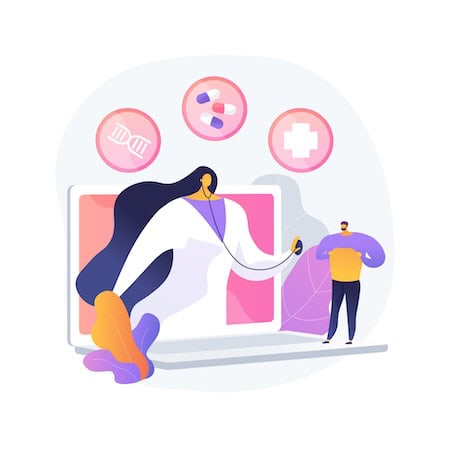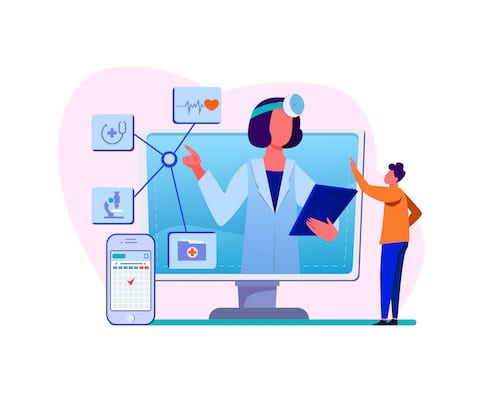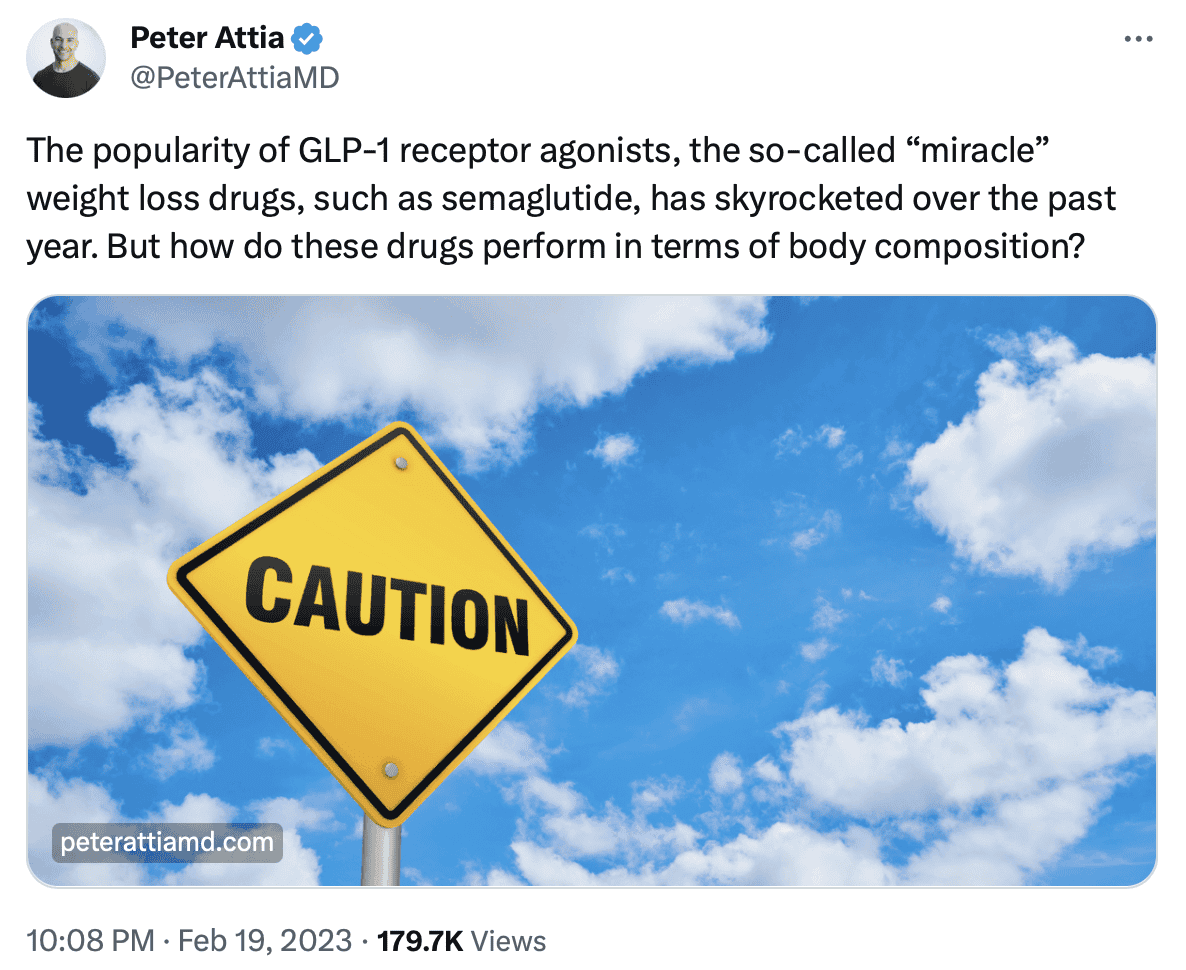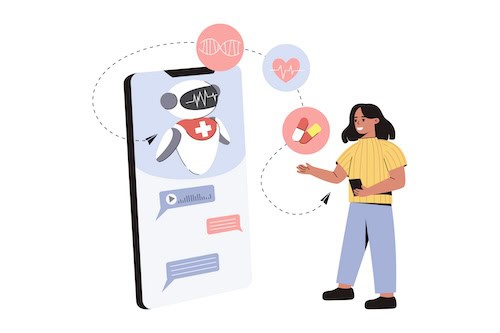The healthcare landscape has witnessed a significant transformation in the last few years. One of the most notable changes has been the rise of GLP-1 virtual clinics. But what exactly are these clinics, and why have they become so popular?
GLP-1, or glucagon-like peptide-1, is a group of medications that have made significant strides in weight loss and diabetes treatment. These drugs, such as Novo Nordisk’s Wegovy and Ozempic, have been proven to aid in weight loss and improve metabolic function. It’s no wonder, then, that more and more providers are jumping on the bandwagon to prescribe these drugs virtually.
So, what’s driving this trend? The answer lies at the intersection of several factors.
- Firstly, the accelerating prevalence of obesity – which stood at 41.9% among adults in the US in March 2020, according to the Centers for Disease Control and Prevention – has created an urgent need for effective weight loss solutions.
- Secondly, the convenience and accessibility offered by telehealth services have made them increasingly popular, especially after the COVID-19 pandemic.
- Finally, virtual clinics can scale limitlessly, especially when automated processes are seamlessly integrated, which makes them a desirable option for providers looking to expand their services.
Digital health companies such as Teladoc and Noom and traditional weight loss companies like WeightWatchers have all launched virtual weight loss businesses with GLP-1 medication prescription offerings.
This proliferation of providers has created a new challenge: how to stand out in an increasingly crowded market. Let’s explore some key strategies in this blog.
Top Takeaways:
- Navigate insurance eligibility and superbill sending process carefully to ensure proper reimbursement and minimize administrative burden.
- Implement remote patient management tools like symptom trackers and wearables (e.g., smart scales) for continuous monitoring and improved patient outcomes.
- Leverage AI automations like AI chat assistants to serve more patients effectively and potentially run a solo provider practice serving thousands of patients.
Table of Contents:
- Why GLP-1 is the New Revolution in Diabetes and Weight Loss Treatment
- The Challenges with GLP-1 Virtual Clinics
- Staying Ahead in the GLP-1 Virtual Clinic Space
- Remote Patient Management: The Game Changer
- RPM + AI for the Win: Value-Based Longitudinal Care
- Scaling Your Practice with Automation
- Why We Care
- Standing Out in the GLP-1 Virtual Clinic Space: Key Takeaways
- Looking Forward: The Future of Virtual Clinics in the Healthcare Industry
Why GLP-1 is the New Revolution in Diabetes and Weight Loss Treatment
The popularity of GLP-1 doesn’t just stem from its effectiveness in promoting weight loss. It’s also due to its relatively safe profile. Unlike some other weight loss medications, GLP-1 drugs come with fewer side effects and risks. This makes them a more appealing choice for both patients and providers.
However, despite the many benefits of GLP-1 and the convenience offered by virtual clinics, there are still hurdles to overcome. One of the biggest challenges is getting coverage through insurance without prior authorization and without type 2 diabetes, which often requires an exhaustive rule-out process.
This is where the role of virtual clinics becomes crucial. By automating decision-making and streamlining processes, these clinics can offer a more efficient and effective solution for patients seeking GLP-1 treatment.
The Challenges with GLP-1 Virtual Clinics
Understanding the current landscape of GLP-1 virtual clinics involves acknowledging the hurdles they face, from an explosion of providers to the complexities of insurance coverage and patient eligibility verification.
Understanding the Current Landscape: An Explosion of Providers
As the popularity of GLP-1 drugs like Wegovy and Ozempic grows, so too does the number of providers in the virtual health industry. Many digital health companies like Teladoc and Noom and traditional weight loss companies like WeightWatchers have introduced virtual weight-loss services that include GLP-1 medication prescription offerings.
Even telehealth companies like Ro, Everly Health, Form Health, and Hims & Hers now offer weight management solutions that include GLP-1 drugs.
Also Read: Telehealth App Development Guide
This surge in providers is not necessarily a bad thing. More options mean more accessibility for patients, which is especially important given the obesity prevalence among adults in the US.
However, it also presents new challenges. As Dr. Caroline Messer, a New York-based endocrinologist, points out, patients often come to appointments with preconceived ideas about their treatment plans that may not be correct. The rise in providers has also raised concerns about the quality of care offered by these platforms.
Navigating a Complex Landscape: The Role of Trust and Expertise
Dr. Robert Lash, chief medical officer at the Endocrine Society, raises a valid point: “I think it’s very hard for patients to understand which digital health companies they can trust and which ones they can’t.” This sentiment is echoed by many other physicians who emphasize the importance of establishing a relationship with patients to ensure they continue taking their medication long-term.
Peter Attia, MD, founder of Early Medical, brings up another important aspect:
The rise in GLP-1 virtual clinics has also sparked a debate about the qualifications of the clinicians prescribing these drugs. Dr. Caroline Messer expresses concern that many clinicians prescribing GLP-1 drugs are not endocrinologists or trained in weight loss medicine. This raises questions about the quality of care and the ability of these providers to handle the potential side effects of GLP-1 drugs.
The Hurdles in Insurance Coverage
As GLP-1 virtual clinics continue to proliferate, one of the most significant hurdles they face is navigating the complex landscape of insurance eligibility and the superbill-sending process. But why is this such a dilemma?
The issue stems from the challenge of obtaining insurance coverage for GLP-1 drugs without prior authorization, even if the individual does not have type 2 diabetes. This often entails a meticulous and thorough assessment process to rule out other possibilities. For many patients seeking treatment, this can be a significant hurdle. Oh, and did I mention that the average out-of-pocket cost for the meds is outrageous?
Dr. Robert Lash, chief medical officer at the Endocrine Society, highlights the issue by stating that there are only two GLP-1s FDA-approved for weight loss, and patients and doctors should be cautious about taking medication for an off-label reason. This means that patients and providers must navigate a complex system of rules and regulations to ensure that the prescribed treatment is covered by insurance.
Medi-Cal Coverage Expansion: A Game-Changer for GLP-1 Virtual Clinics
A major shift in the landscape of GLP-1 virtual clinics has arrived—Medi-Cal will now cover Ozempic for eligible patients. Historically, a significant barrier to access has been the prohibitive cost of GLP-1 medications, particularly for patients without Type 2 diabetes. With Medi-Cal expanding its coverage, thousands of Californians now have a financially viable path to accessing these treatments.
For virtual GLP-1 clinics, this presents both an opportunity and a challenge:
- Higher Patient Volume: Expect an increase in demand as more patients explore GLP-1 therapies through telehealth platforms.
- More Competition: With affordability no longer a major barrier, new virtual weight loss programs will emerge, intensifying market competition.
- A Need for Automation: Clinics must now focus on automating insurance verification and streamlining patient onboarding to handle the increased caseload efficiently.
Empowering Patients to Handle Insurance Matters
In the face of these challenges, how can GLP-1 virtual clinics empower their patients to handle insurance matters? The answer lies in education and support.
Firstly, clinics should provide clear, easily understandable information about insurance coverage for GLP-1 treatments. This could take the form of guides or resources explaining the process and insurance approval requirements. Think:
- AI chatbots answering patient questions
- Educational materials
- Video tutorials
- Quizzes
Secondly, clinics can offer support throughout the insurance approval process. For example, some virtual clinics, like LifeMD, provide insurance coverage assistance as part of their services. This not only helps patients navigate the process but also demonstrates the clinic’s commitment to patient care.
By empowering patients to handle their own insurance matters, GLP-1 virtual clinics can build trust and ensure their patients receive the treatment they need.
Also Read: Patient Engagement Platform Guide
Staying Ahead in the GLP-1 Virtual Clinic Space
In the highly competitive GLP-1 virtual clinic space, it is essential for clinics to continuously innovate, adopt streamlined procedures, and provide outstanding patient care to differentiate themselves and stay ahead.
Automating Decision-Making: The Role of Calculators and Questionnaires
In an industry that is increasingly crowded, how can your GLP-1 virtual clinic stand out? One key strategy lies in automation, particularly when it comes to decision-making processes.
A valuable tool for this purpose is the use of calculators and questionnaires. These can help determine if patients qualify for GLP-1 medications based on their BMI and other relevant health factors. By automating this process, you streamline patient intake and ensure that only suitable candidates are prescribed these medications. This can increase the effectiveness of treatments and improve patient satisfaction.
Streamlining Intake and Telehealth Visits: Best Practices
Intake is a crucial part of any patient’s journey, and it’s no different in a GLP-1 virtual clinic. A streamlined intake process can improve patient satisfaction and increase the likelihood of them continuing with their treatment plan.
One way to achieve this is by utilizing a robust virtual health platform that efficiently handles patient registration, appointment scheduling, and medical history collection. Such a platform could also facilitate secure video consultations, enabling providers to connect with patients remotely and conveniently.
Providers should focus on building a strong relationship with the patient during these telehealth visits. Experts in the field suggest that in short interactions, individuals are unlikely to form relationships that foster long-term medication adherence. Therefore, ensuring meaningful and effective communication during these visits is crucial.
Let’s explore how the right digital tools can propel your virtual clinic to the forefront of this rapidly evolving field.
Remote Patient Management: The Game Changer
As the GLP-1 virtual clinic market becomes increasingly saturated, how can you ensure your clinic stands out? The answer lies in remote patient management – a revolutionary approach that enhances patient engagement, improves outcomes, and differentiates your clinic from others in the market.
The Power of Chat-based Symptom Trackers and Wearable Integration
Chat-based symptom trackers are an essential tool for remote patient management. They enable patients to report their symptoms, progress, and concerns, allowing healthcare providers to review the information and offer guidance or adjust treatment plans as necessary. This real-time communication helps build a solid patient-provider relationship and fosters accountability.
Related: Chatbots in Healthcare: Use-Cases and Best Practices
But chat-based symptom trackers are just one piece of the puzzle. By integrating wearable devices, such as fitness trackers, smartwatches, smart scales providers can gather objective data on patients’ physical activity, heart rate, and sleep patterns. This data provides valuable insights into patients’ overall health and helps providers tailor their recommendations accordingly.
The Power of AI in Predicting Patient Health Status and Tracking Weight
As the GLP-1 virtual clinic market evolves, standing out requires more than effective remote patient management – it demands a forward-thinking approach that embraces the power of machine learning and artificial intelligence technologies.
AI/ML can potentially revolutionize patient care in GLP-1 virtual clinics. By analyzing patient data, AI algorithms can:
- predict health status
- automatically track weight changes
- make personalized recommendations for each patient
For instance, AI can analyze a patient’s health data and lifestyle habits to predict the likelihood of certain health conditions, enabling providers to intervene early and potentially prevent these conditions from developing. Similarly, AI can automatically track a patient’s weight status over time, providing valuable insights into their progress and helping providers adjust treatment plans as needed.
Even starting with a gentle AI chatbot that sends reminders and guides patients along their treatment path can be an excellent initial step in harnessing AI’s power in a virtual GLP-1 clinic, establishing a foundation for further, more complex applications.
RPM + AI for the Win: Value-Based Longitudinal Care
However, the benefits of AI go beyond predictive analytics and tracking. When combined with remote patient management, AI allows providers to deliver comprehensive, value-based longitudinal care. This means that patients receive continuous, personalized care that not only addresses their immediate needs but also focuses on long-term health outcomes.
By leveraging AI, providers can ensure that every patient receives the proper care at the right time, leading to improved health outcomes, higher patient satisfaction, and, ultimately, a successful, standout GLP-1 virtual clinic.
Related: RPM App Development Guide
According to Dr. Linda Anegawa, a board-certified obesity medicine physician and Noom’s Chief of Medicine, there has been a strong focus on the psychological aspects of weight loss and healthy weight maintenance. However, it’s becoming increasingly evident that the interplay between biology and psychology is crucial. AI and RPM tools help providers strike a balance in understanding and addressing this relationship.
Scaling Your Practice with Automation
In the increasingly competitive landscape of GLP-1 virtual clinics, automation can be a game-changer for providers looking to scale their practice and serve more patients effectively. Here, we’ll explore how automation can help you streamline processes, improve efficiency, and, most importantly, ensure outstanding patient care.
How Medi-Cal’s Coverage Boosts Virtual Therapy & AI-Driven Automation
As GLP-1 medications become more accessible, clinics need scalable solutions to handle the influx of patients. This is where AI-powered automation and virtual therapy solutions become indispensable.
Here’s how AI-driven automation can optimize Medi-Cal-covered GLP-1 virtual clinics:
- Automated Insurance Pre-Checks: AI-driven systems can quickly verify Medi-Cal eligibility, reducing wait times for approval.
- Virtual Therapy & AI Chatbots: With higher patient volumes, AI chat assistants can offer behavioral coaching, answer FAQs, and manage follow-ups to enhance patient retention.
- Scalable Remote Patient Monitoring (RPM): Integrated smart scales, symptom trackers, and AI-driven alerts can ensure continuous engagement without overwhelming providers.
How Automation Can Help You Serve More Patients Effectively
Automation offers many benefits for healthcare providers, especially in the context of GLP-1 virtual clinics. It can help you:
- Streamline processes: By automating tasks like appointment scheduling, electronic form completion, and reminders, you can optimize your workflows and reduce administrative burden.
- Improve efficiency: Automation allows you to see more patients in less time without compromising the quality of care.
- Enhance patient experience: Automated processes provide convenience and significantly improve patient satisfaction.
- Delegating tasks: Automation allows providers to delegate specific tasks to support staff, freeing up their time to focus on patient care and practice expansion.
The Potential of Running a Solo Provider Practice Serving 10K+ Patients
With the correct use of automation, even a solo provider can effectively manage an impressive number of patients. Here’s how:
- Leverage technology: Tools like telehealth platforms, remote patient monitoring (RPM) solutions, AI chatbots, and symptom trackers enable you to monitor and engage with patients remotely.
- Deliver personalized care: Automation enables you to deliver personalized care at scale. Even as you manage a larger patient population, each patient receives the attention they need.
- Remote patient management: Automation enables providers to monitor patients’ health remotely, track symptoms, and intervene when necessary, leading to better outcomes and reduced hospitalizations.
By striking the right balance between automation and personalized care, providers can maintain patient satisfaction and deliver high-quality healthcare services.
Why We Care: Lots of Hands-On Experience
Imagine running an entire patient practice alone or with just one fractional practice manager. Sounds like a dream, right? Well, with our expertise, this can become reality. Such a platform needs to be designed to automate your entire practice, covering everything from scheduling and authorization to intake and revenue cycle management.
Why does this matter? Because in today’s digital age, patients are more likely to select a provider that allows online scheduling and follow-ups. Not to mention, excessive admin tasks have been identified as the biggest contributor to clinician burnout. By leveraging automation tools, you can reduce administrative burden, improve patient satisfaction, and ultimately, boost your virtual clinic’s success.
How Topflight Leverages Technology to Automate Patient Care
A patient-care platform powered by automation empowers healthcare providers to enhance various aspects of their GLP-1 virtual clinic. Let me show you how such a platform could transform their practice and bring about positive change.
- Intake Automation: Patient no-shows can be a major headache for any clinic. With an AI solution, you can significantly reduce this issue. The platform could offer corresponding features, such as automated scheduling, reminders, and follow-ups to ensure patients never miss their appointments.
- Intelligent Chatbot: An AI-powered chatbot allows patients to navigate services, find providers, book appointments, make payments, and more. This not only enhances patient engagement but also frees up valuable time for you and your staff to focus on what really matters – providing top-notch patient care.
- Telehealth Visits: Advanced telehealth features, including HIPAA-compliant calling and messaging, facilitate confidential and secure communication between patients and providers, thereby fostering trust and confidence in your virtual GLP-1 clinic.
- Clinical Essentials: From E-fax and e-prescribing to billing, insurance management, and lab order management.
- Remote Patient Monitoring: supporting providers to run a successful virtual GLP-1 clinic by offering more comprehensive, efficient, and user-friendly services can go a long way with RPM features.
- HIPAA Compliance & Integration with Major EHRs: Protecting sensitive patient information is paramount in the healthcare industry. That’s why the platform must ensure HIPAA-compliant security measures, giving you and your patients peace of mind. In addition, the software must seamlessly integrate with EMR systems to ensure a smooth workflow, further enhancing efficiency and effectiveness in your practice.
Also Read: HIPAA Compliant App Development Guide
Standing Out in the GLP-1 Virtual Clinic Space: Key Takeaways
As explored throughout this blog, launching a successful GLP-1 virtual clinic in today’s competitive landscape requires more than just a basic understanding of the medication and its benefits. It requires strategic planning, efficient processes, and the right technological tools. But how can you ensure that your clinic stands out amid the growing competition?
Here are some key takeaways to keep in mind as you embark on your journey to launch a standout GLP-1 virtual clinic:
- Differentiate Through AI-Powered Engagement: More patients mean more competition, making AI-driven chatbots and virtual therapy critical for patient retention. Clinics should integrate AI coaching tools for medication adherence, lifestyle tracking, and behavioral counseling to offer a more holistic patient experience.
- Automate decision-making: Use calculators and questionnaires to streamline the process and ensure patients meet the criteria for GLP-1 treatment.
- Streamline intake and telehealth visits: This is crucial for providing patients a seamless and efficient experience.
- Navigate insurance eligibility and superbill sending process carefully: This requires careful consideration to ensure proper reimbursement and minimize administrative burden.
- Implement remote patient management tools: Chat-based symptom trackers, wearable integration, and smart scale integration can be game changers, allowing for continuous monitoring and improved patient outcomes.
- Leverage AI automations: This can help providers serve more patients effectively and potentially even run a solo provider practice while increasing its scalability and profitability non-stop.
- Optimize Your Patient Intake Funnel: To fully leverage the Medi-Cal policy change, clinics should refine their marketing, onboarding, and conversion strategies. Automated pre-screening questionnaires, AI-driven risk assessments, and personalized onboarding can accelerate new patient enrollment while ensuring adherence to clinical protocols.
Looking Forward: The Future of Virtual Clinics in the Healthcare Industry
The future of virtual clinics in the healthcare industry looks promising, with the potential for further advancements in technology and AI to enhance patient care and improve outcomes.
The expansion of Medi-Cal coverage for Ozempic signals a broader trend—insurance payers are increasingly recognizing the long-term benefits of GLP-1 treatments. This shift will likely push other insurers to follow suit, accelerating the adoption of virtual GLP-1 clinics across the U.S.
Virtual clinics that embrace AI-driven automation will be best positioned to thrive in this evolving landscape. By streamlining insurance workflows, automating patient engagement, and integrating remote monitoring solutions, clinics can ensure sustainable growth while delivering high-quality patient care.
Please contact us if you’d like to learn more about how Topflight can assist you on this journey or if you need help setting up a 100% custom digital environment for your GLP-1 virtual clinic.
[This blog was originally published on Jan 22, 2024 but has been updated with more recent data]
FAQ
What makes GLP-1 a safe choice for weight loss for diabetic patients?
GLP-1, or Glucagon-Like Peptide-1, is a hormone that helps to regulate blood sugar levels. It works by slowing down digestion, reducing appetite, and promoting insulin secretion when needed. This makes it a safe and effective treatment option for diabetic patients interested in weight loss.
How can Topflight contribute to the success of a virtual GLP-1 clinic?
With our commitment to continuous innovation and improvement, Topflight offers comprehensive, efficient, and user-friendly services, including advanced telehealth features, clinical essentials, and remote patient monitoring. These features support providers in offering high-quality, seamless care in a virtual GLP-1 clinic setting.
How does Topflight automate patient intake?
Topflight automates patient intake through features like automated scheduling, reminders, and follow-ups. These features work together to minimize patient no-shows and streamline the process, allowing providers more time to focus on patient care.
How can AI chatbot enhance patient engagement?
An Intelligent Chatbot allows patients to navigate services, find providers, book appointments, and make payments in a user-friendly interface. This enhanced accessibility and ease of use can significantly boost patient engagement.
How does Topflight ensure HIPAA compliance?
The security of patient information is a top priority at Topflight. We apply robust, HIPAA-compliant security measures to protect sensitive patient data, and we also offer seamless integration with major EMR systems.






